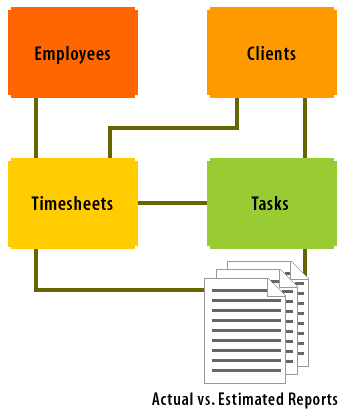| Lesson 2 | What is a relational database? |
| Objective | Discuss the Basic Concepts underlying Relational Databases |
Basic Concepts underlying Relational Databases
Database Tables
A database is made up of one or more tables. Multiple tables in a database share a relationship in some way; that's why such a database is called a relational database.
As the database designer, you decide how the tables will relate to each other, although not every table will relate to every other table. Once you determine the relationships between tables, you can have the database management system (DBMS) enforce the relationship. SQL Server 2012 is the DBMS that we will be using throughout this course. Enforcement of relationships is known as referential integrity, which we will cover later in this course.
As the database designer, you decide how the tables will relate to each other, although not every table will relate to every other table. Once you determine the relationships between tables, you can have the database management system (DBMS) enforce the relationship. SQL Server 2012 is the DBMS that we will be using throughout this course. Enforcement of relationships is known as referential integrity, which we will cover later in this course.
Logical Database Design
When you design a relational database, the easiest way to begin is to construct a logical database design, also known as a logical model. In your logical model, you note on paper the major categories of information that are to be stored in the database.
You can break down your logical model further into the actual tables that will store data, but this depends on your application. The following diagram shows a logical model for the database you will be developing for the course project:

Once you and/or your client are satisfied with the logical model, you are ready to construct the actual database, known as the physical database design. Physically constructing your database is discussed later in this course.
In the next lesson, you will learn about services, an important feature of Microsoft SQL Server 2012.
In the next lesson, you will learn about services, an important feature of Microsoft SQL Server 2012.